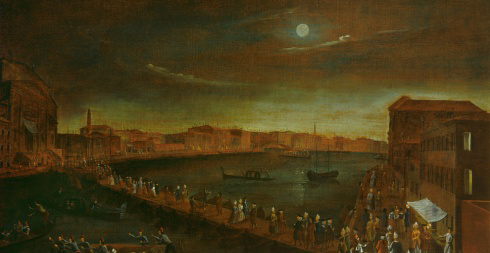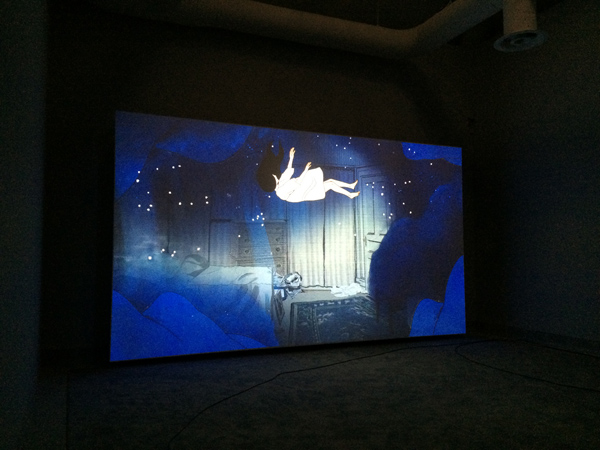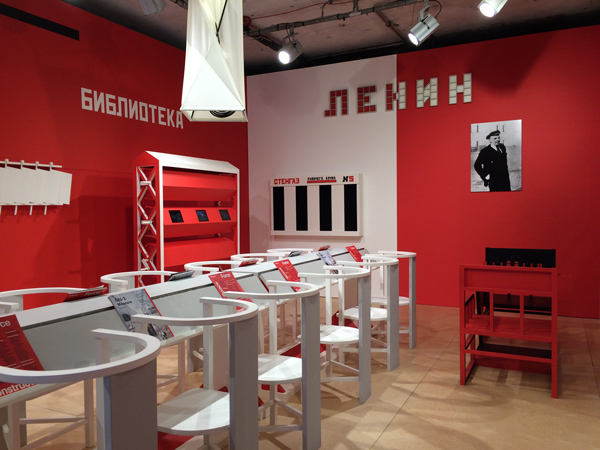I have had the opportunity to visit the Venice Biennale on numerous occasions. In reflecting, I realize that what makes one trip stand out over another is the totality of the experience and not the specificity of the art. How can one not love Venice? Navigating criss-crossing bridges and canals to find an installation that completely takes over and transforms an ancient palace is always one of the highlights. It is also interesting how technology has changed the way one moves through the city. In the past, I recall people trying to find tiny streets hunched over large maps, folding and unfolding the document until it disintegrated. Today people have cell phones and navigate by GPS which pinpoints your location and directs you to your destination with ease. In many ways, I lament the loss of the treasure hunt qualities of visiting Venice, though understand that with the digital maps you can get to places quicker and see so much more.
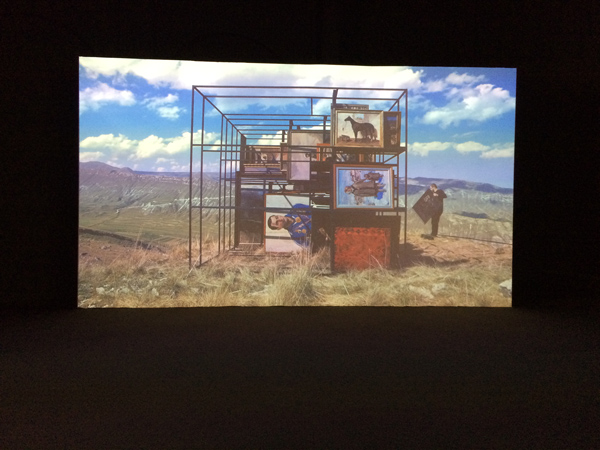
Taus Makhacheva, Tightrope
At the Venice airport, I picked up two copies of the map to the 57th Biennale which lists 209 exhibition venues and on the bus to the city, began to sort out where the national pavilions, collateral events and other exhibitions were located to be able to maximize my four days. A visit to the Biennale usually consists of a day at the Giardini and a day at the Arsenale and then a day or two roaming around town hunting for offsite exhibitions.

Prada foundation
This year, visits to the Fondazione Prada, the Palazzo Fortuny, and shows featuring work of Vik Muniz at Palazzo Cini and an exhibition entitled “Philip Guston and the Poets” at Gallerie dell’Accademia were among the highlights. I chose to skip Damien Hirst, though got a glance at his towering sculpture in the lobby of Palazzo Grassi and decided that was enough. At the Fondazione Querini Stampalia there was an intriguing video installation, The House of Life by Hadassa Goldvicht about the changing nature of Jewish cemeteries in Venice, historical memory, life and death.
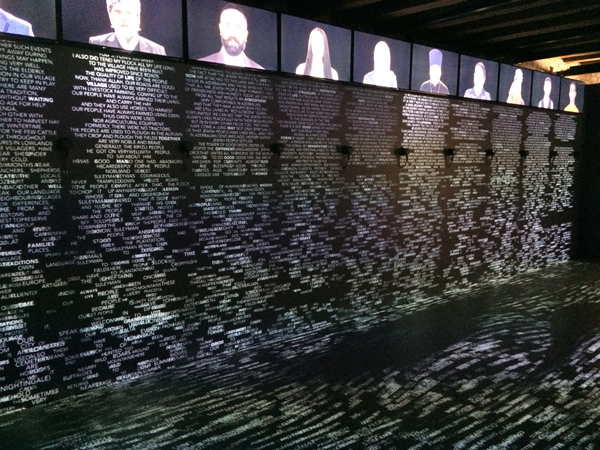
Republic of Azerbaijan
While looking at the permanent collection at Querini Stampalia, one of the guards pointed to a 500-year-old painting that depicted the Festa del Redentore. My partner and I realized that we had seen a modern version of that bridge being constructed that morning as our trip to Venice happened to coincide with the annual Festa del Redentore—the festival of the redeemer—in which a bridge of barges is built linking the Zattere to the church of the Redeemer on the Giudecca and allowing people to walk on water—actually across the water on this temporary bridge, in addition to enjoying a late night of partying and fireworks. This stood out as a truly amazing experience.

Finland
It is these small things, coincidences, rituals and even the tourists chasing pigeons in Piazza San Marco that make a trip to Venice memorable. No day is complete in Venice, especially during the hot summer months, without Gelato. Sampling flavors from different stands parallels the intake of art—a range of colors, textures and flavors. Gelato aside, there was much to enjoy at the 57th Biennale.
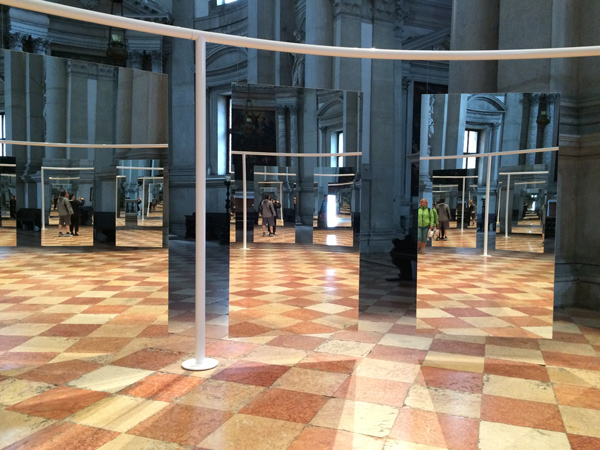
Michelangelo Pistoletto
For me, what makes a visit to Venice so special is to simultaneously experience the old and new, the ancient and the contemporary. Art trends come and go, but the canals and historic buildings remain. I particularly enjoy the surprise of walking into a space—new or old—and marveling at how the art engages with the architecture. An example is “One and One makes Three,” Michelangelo Pistoletto’s retrospective at the Basilica di San Giorgio. It included the site specific installation, Suspended Perimeter-Love Difference where a circle of mirrors was suspended in the center of the church creating infinite depth through reflections of the space and people’s bodies.
The works that remain vibrant and current days after my visit speak to my concerns as a practicing artist. One of the reasons I enjoy visiting global exhibitions like the Venice Biennale and Documenta is to be inspired and stimulated by new ways of creating and presenting installation and screen based work. In many ways, my review of the Biennale can be seen as a trajectory through the most interesting screen-based presentations.
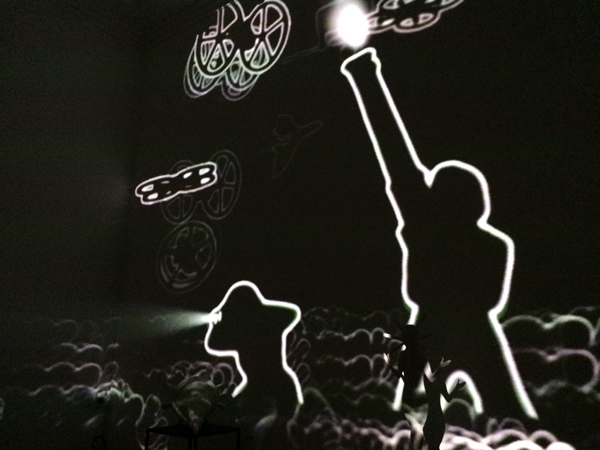
Russian Pavilion
Traditionally the Arsenale hosts a large group exhibition and this year it featured works by over 70 artists as well as numerous national pavilions. My strategy is to try to glance at everything and get a sense of the overarching theme and aesthetic. I paid little attention to the curators themes—Pavilion of the Common, Pavilion of the Earth, Pavilion of Traditions. Pavilion of Shamans, Dionysian Pavilion, Pavilion of Colors, and the Pavilion of Time and Infinity—as I traversed the large space taking in works in just about every medium imaginable. There was very little painting and most of the works seemed to have a social and political agenda of some kind. I tend to gravitate toward site specific installations and video. Yet, when confronted hours of footage, I need to be seduced visually in order to fully engage with the screen.
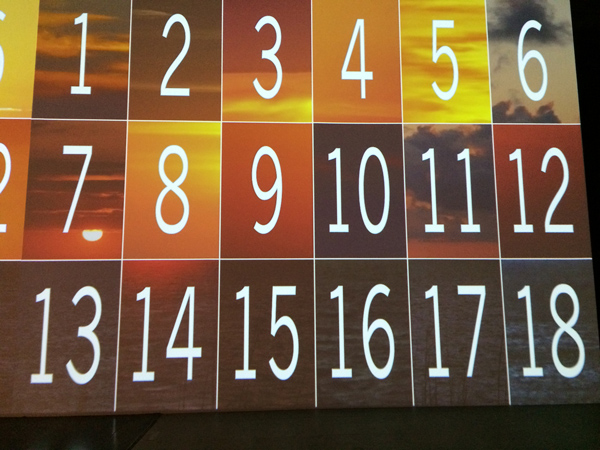
Charles Atlas
The works that caught my eye at the Arsenale included Charles Atlas’ wall-sized projection of sunsets in a video entitled The Tyranny of Consciousness, Guan Xiao’s three-channel video projection David, an amusing look at the commodification of Michelangelo’s famous sculpture, and Nevin Aladag’s Traces, a whimsical three-channel video projection that functions as an ad hoc concert made from instruments and everyday objects placed in parks, playgrounds and other public spaces throughout Stuttgart: capturing their sounds created via wind, movement and happenstance.
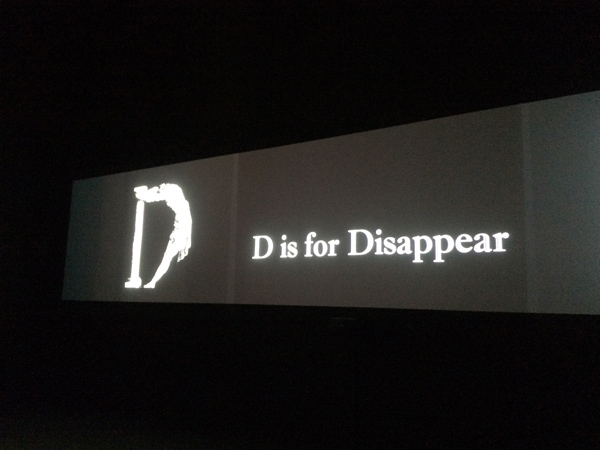
Guan Xiao, David


